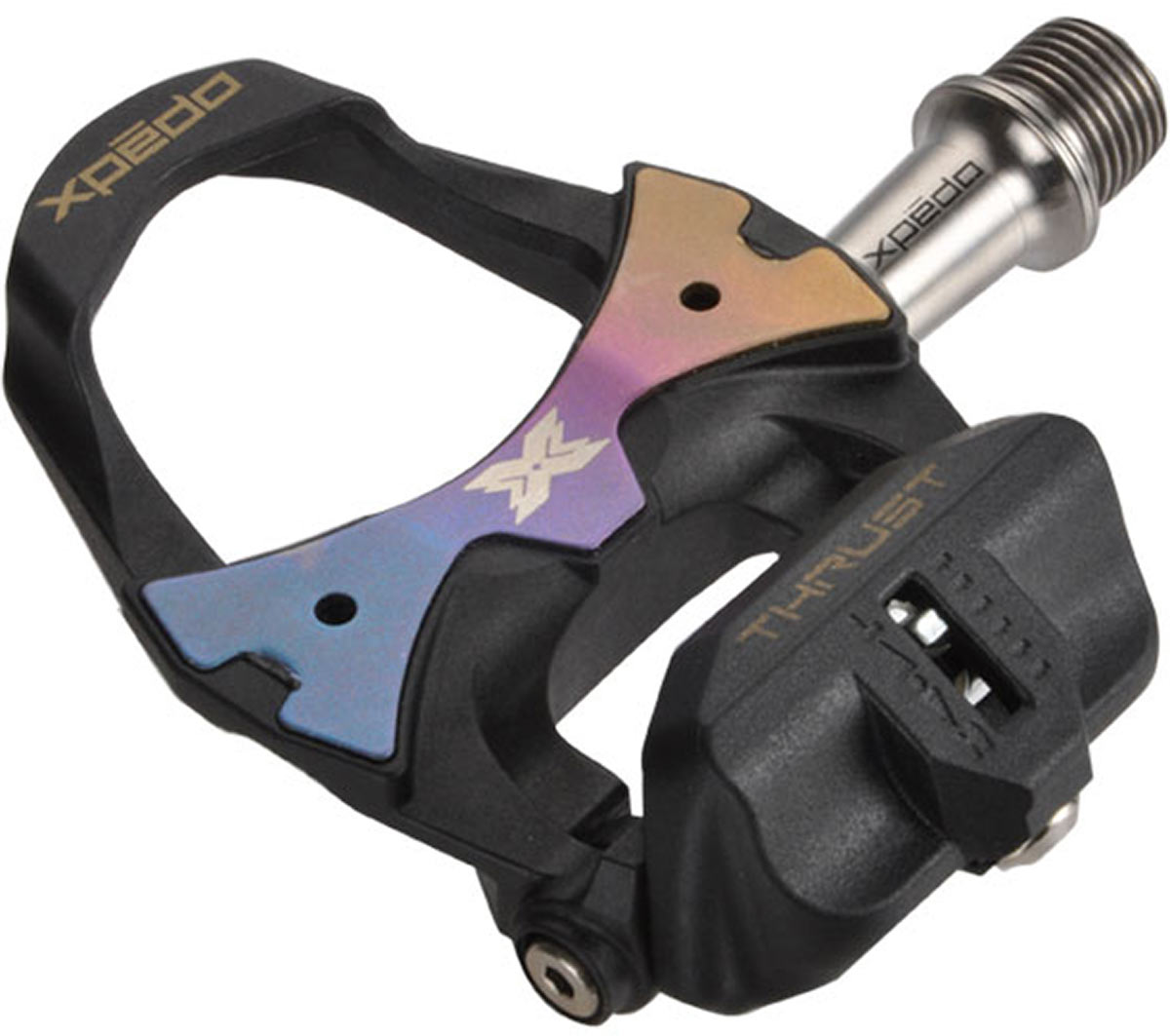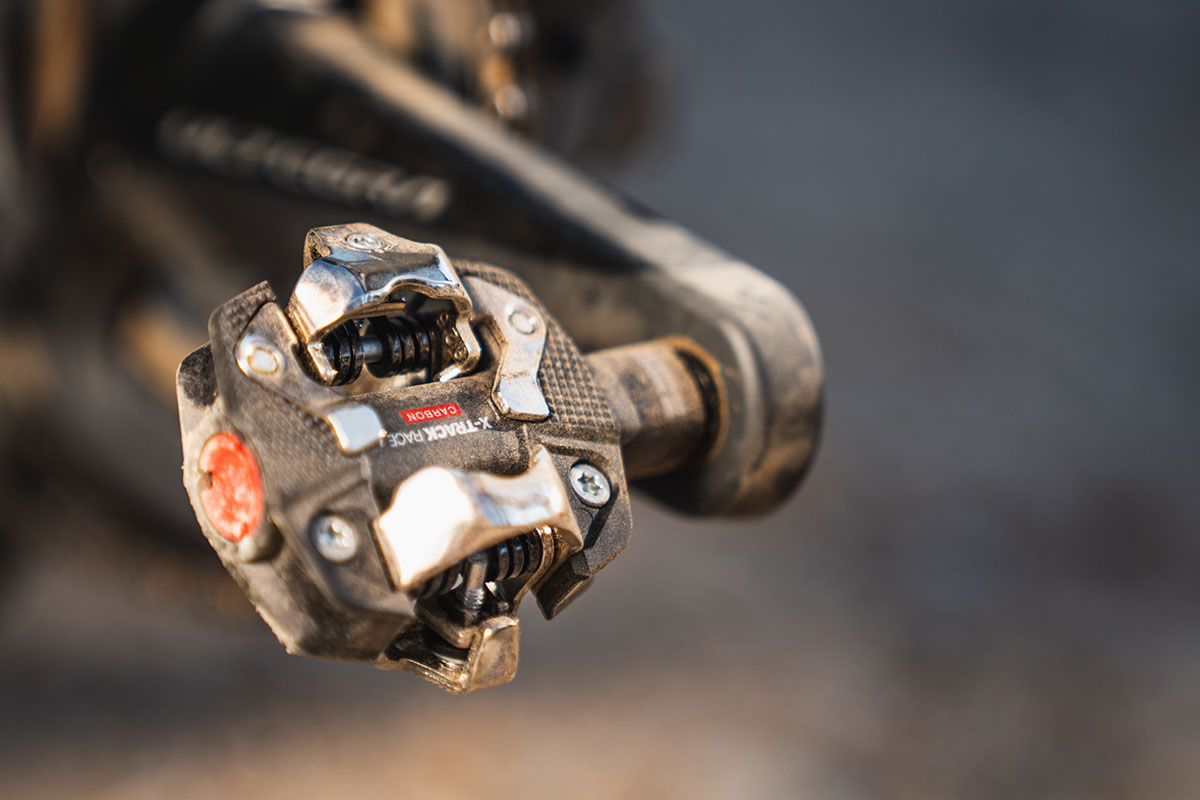We know, there’s no such thing as a stupid question. But there are some questions you might not want to ask your local shop or riding buddies. AASQ is our weekly series where we get to the bottom of your questions – serious or otherwise. Hit the link at the bottom of the post to submit your own question!
We’ve received a bunch of questions on the topic of pedals, a sometimes neglected yet critical component that translates your effort, sweat and tears into forward propulsion down the road and trail. They are a pretty key component of bike set-up, worthy of serious consideration, not only for power and gains, but for comfort and maintaining healthy hips, knees and ankles. We’ve pitched your questions, covering everything from Q-Factor (what on earth is that, I hear you say?), pedal extenders, and platform size, to experts of the at LOOK and XPEDO. Here are their answers…
What is Q Factor and why should I care?
LOOK: Q-Factor is the measurement of the width from the outside surface of one crank arm to the outside surface of the other crank arm and is an important measurement to take into account when properly fitting a bike. This measurement, in conjunction with spindle width and cleat placement on the shoe, ensure proper alignment of the knee and consistent tracking throughout the pedal stroke. The proper setup and interaction of these three aspects of a bicycle fit will help prevent repetitive motion injuries.
XPEDO: The simplest way to describe q-factor is your stance width. From an overall fit standpoint, the measurement is outside of one crank arm to the outside of the opposite crank arm. For pedals, the measurement is from the outside surface of the crank to the middle of the pedal. Proper pedal or cleat options allow for q-factor adjustment for optimal comfort and power. We recommend visiting a bike fit professional. They have the tools and technology to narrow down your optimal q-factor. On some occasions, the q-factor on the right side might be different from the left side. Many manufactures, including Shimano and Speedplay offer different q-factor options. Xpedo has five different q-factor options for the THRUST 8 road pedal, at 50mm, 53mm (stock), 56mm, 59mm and 62mm.

Q: Is the optimal Q Factor different for everyone depending on leg length?
LOOK: Leg length doesn’t really impact Q-Factor at all, it has more to do with a rider’s stance on a bike. To adjust a rider’s stance on a bike, to ensure optimal tracking of the knee, there are three adjustments that can be made. Q-Factor is adjusted through changing out cranks. That being said you can’t just put any width Q-Factor crank on a bike. Oftentimes, manufacturers will design frames around a certain Q-Factor crank and in some instances frames will not be compatible with a different width crank. The second way to adjust stance to address knee alignment is through changing pedal spindle lengths. This is often done through the replacement of the spindle with a different length. The third way to adjust stance to optimize knee alignment is through cleat adjustment. Most cleats offer some amount of lateral adjustment to address a rider’s stance.
XPEDO: Yes, optimal q-factor is different for everyone. Most people can make small adjustments with the cleats using stock pedals that are usually anywhere between 52 and 54mm q-factor. Many manufacturers offer different widths at smaller increments. For those who need much wider q-factor options there are pedal extenders which can increase the width up to +20mm. We recommend visiting a bike fit professional.
Q: I use a Shimano MT pedal, but I get pain under the little toe. I ride just on roads. I was wondering if a pedal with a big platform, like the Nukeproof Horizon would take some pressure off the bottom of my feet. It looks like a very good pedal.
LOOK: For most riders foot pain can be connected to the shoes. Either the soles are too stiff, or inner last shape is inappropriate. Shifting to a larger pedal platform will bring more stability when pedalling, but you have to be sure that the pedal has been properly designed with adequate pedal to shoe contact (not only the cleat to pedal) to truly take advantage of the additional surface contact area. When LOOK designs pedals, much of our focus is on maximizing the contact area between the shoe/cleat and the pedal itself. This ensures that the pedal offers the most stability and support possible.

XPEDO: I would recommend adjusting the cleat for a wider stance (wider q-factor) first. A larger pedal may solve the problem since pedals like the Horizon Nukeproof have a wider q-factor (~56mm). A standard MTB XC pedal is usually around 52-53mm q-factor. A larger platform area doesn’t necessary mean more support of the shoe especially in the front. Depending on the shoe, there might not be direct contact with the pedal body.
Q: Is there any difference between using a 95mm wide platform pedal with 25mm pedal extenders, vs using a 120mm wide pedal (e.g. VP Harrier)? Is one setup more likely to damage the cranks or be less strong?
LOOK: Yes, there is a big difference as the pedal extender completely changes the force applied on the axle. The center of the axle is moved outward resulting in a higher force being applied on the axle. This repositioning of the axle could lead to failure. During pedal development the laboratory tests are really demanding and strict and this change in configuration is not something the manufacturer tests for. So without a doubt we recommend the wider pedal solution rather than adding any kind of pedal extender.
XPEDO: If you’re happy with the smaller platform pedal but just need a wider stance for better fit the extenders will work fine. If you’re looking for more real estate under your foot for wider traction and support, a larger pedal at 120mm would be better.
Q: Are pedal extenders durable enough for MTB? I imagine that there’s some impacts that go beyond the steel’s endurance limit and risk the narrow threaded part shearing off over time. I also worry about high torque possibly “necking” it. I’ve seen the Spec recall – the photo evidence of broken extenders looks like the metal wasn’t rolled like a stainless bolt, but perhaps was made through casting (assumed to be weaker). Reference here.
LOOK: This additional part (pedal extender) will increase the likelihood of pedal failure. The extender pushes the center of the axle outward which increases the force applied to it. This is not a scenario that is tested for by pedal manufacturers since it’s outside of the intended usage and design of the pedals.
XPEDO: We’ve seen riders use pedal extenders for MTB (mostly XC). Depending on how wide you need to go, we recommend a longer spindle option available from various manufacturers (ISSI, Shimano, Xpedo).
Q: I have one foot that wants to have a strong toe-out position. My knee gets inflamed if I pedal with it locked straight forward with clipless (and my knee tracks inwards to the top tube). Half my foot ends up hanging off 100mm wide platform pedals. What should I do? I’ve ventured with pedal extenders, but my foot seems to like that outboard edge of the pedal after riding so long like that. Varus wedges?
LOOK: The use of pedal extenders won’t solve the problem, but just move it. The best option might be to see a bike fitter to know exactly what is needed to realign the hip, knee and ankle. They may find that cleat wedges or a custom insole will help address the fit issues.
XPEDO: We recommend visiting your local bike fit specialist to see what the options are. If you prefer clipless pedals there are different options with varying q-factors and cleat float to minimize the discomfort with your knee. For platform pedals, I would look into a larger footprint. There are numerous brands out there that offer larger platform pedals with 100mm+ widths.
Got a question of your own? Click here to use the AASQ form to submit questions on any cycling-related topic of your choice, and we’ll get the experts to answer them for you!

